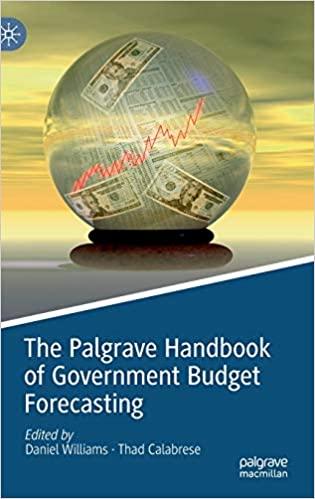Question
(b) What are the main assumptions underlying standard applications of the WACC method? Are these assumptions plausible, also in light of the existing empirical evidence?

(b) What are the main assumptions underlying standard applications of the WACC method? Are these assumptions plausible, also in light of the existing empirical evidence? In the alternative APV method, it is often assumed that the tax shields should be discounted using the cost of debt. Do you think this a reasonable assumption in real- world, practical applications? [Word limit: 350 words]
c) Compare and contrast the assumptions and implications of the trade-off theory with those of the pecking order theory of capital structure. Briefly highlight evidence that supports the pecking order theory while being inconsistent with the trade-off theory. [Word limit: 300 words]
Need answer ASAP! Much appreciated!
QUESTION 1 (a) A very successful and profitable firm is currently considering a new, large investment project that could be initiated at the start of 2021. The project involves the acquisition of a plant, which requires an initial outlay of 420 million. Although it is not clear for how long the project will last, there is an expectation that over the first six years of the project its initial capital investment should be fully depreciated. The firm's accountants have prepared the following projections on expected sales and cash flows, and information on the cost of capital of the company: Sales EBITD Depreciation EBIT Tax expense EBIAT 2021 110 60 (70) (10) 2 (8) Table 1. Sales and cash flow projections 2022 2023 2024 148 151 135 75 80 70 (70) (70) (70) 5 10 0 (1) 0 4 8 0 2025 142 70 (70) 0 0 0 2026 145 75 (70) 5 (1) 4 (2) Table 2. Cost of capital Risk-free Rate (Rf) 1% Project Cost of Debt (Rd) 5% Market Risk Premium 5% Marginal Corporate Tax Rate (Tc) 20% Asset Beta of comparable companies 1.1 QUESTION 1 (a) A very successful and profitable firm is currently considering a new, large investment project that could be initiated at the start of 2021. The project involves the acquisition of a plant, which requires an initial outlay of 420 million. Although it is not clear for how long the project will last, there is an expectation that over the first six years of the project its initial capital investment should be fully depreciated. The firm's accountants have prepared the following projections on expected sales and cash flows, and information on the cost of capital of the company: Sales EBITD Depreciation EBIT Tax expense EBIAT 2021 110 60 (70) (10) 2 (8) Table 1. Sales and cash flow projections 2022 2023 2024 148 151 135 75 80 70 (70) (70) (70) 5 10 0 (1) 0 4 8 0 2025 142 70 (70) 0 0 0 2026 145 75 (70) 5 (1) 4 (2) Table 2. Cost of capital Risk-free Rate (Rf) 1% Project Cost of Debt (Rd) 5% Market Risk Premium 5% Marginal Corporate Tax Rate (Tc) 20% Asset Beta of comparable companies
Step by Step Solution
There are 3 Steps involved in it
Step: 1

Get Instant Access to Expert-Tailored Solutions
See step-by-step solutions with expert insights and AI powered tools for academic success
Step: 2

Step: 3

Ace Your Homework with AI
Get the answers you need in no time with our AI-driven, step-by-step assistance
Get Started


